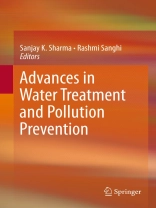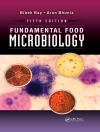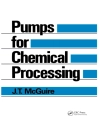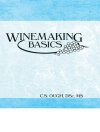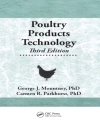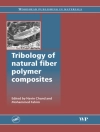Advances in Water Treatment and Pollution Prevention explores the most up-to-date studies in the field of water pollution. More specifically, this book examines the causes and effects of this threatening phenomenon and identifies the preventive measures that can be taken to contain, and even to defeat, water pollution worldwide.
The papers gathered in this volume pinpoint the need to implement greener water treatments to prevent water pollution from impacting ecosystems, human well-being and economies any further. They also successfully outline the processes that have been studied, optimized and developed so far to sustain our environment.
Advances in Water Treatment and Pollution Prevention will represent a valuable resource to academic researchers, students, institutions, environmentalists, and anyone interested in environmental policies aimed at safeguarding both the quality and the quantity of water.
Mục lục
Green Practices to save our precious ‘water resource’.- Water pathways through the ages: from early aqueducts to next generation of waste water treatment plants.- The removal of illicit drugs and metabolites during wastewater and drinking water treatment.- Removal of Dyes and Pigments from Industrial Effluents.- Heavy metal removal through biosorptive pathways.- Mesoporous-Assembled Nanocrystal Photocatalysts for Degradation of Azo Dyes.- Microwave–Assisted Organic Pollutants Degradation.- Direct Flocculation Process for Wastewater Treatment.- Combined macromolecular adsorption and coagulation for improvement of membrane separation in water treatment.- Hybrid sonochemical treatment of contaminated wastewater: Sonophotochemical and sonoelectrochemical approaches. Part I: Description of the techniques.- Hybrid sonochemical treatments of wastewater: Sonophotochemical and Sonoelectrochemical approaches. Part II: Sonophotocatalytic and Sonoelectrochemical degradation of organic pollutants.- Nature is the answer: Water and wastewater treatment by new natural-based agents.- Polysaccharide-based macromolecular materials for decolorisation of textile effluents.- Wastewater treatment with concomitant bioenergy production using microbial fuel cells.
Giới thiệu về tác giả
Prof. (Dr.) Sanjay K. Sharma is a very well known author and Editor of many books, research journals and hundreds of articles from last twenty years. His recently published books are ‘Green Corrosion Chemistry and Engineering’ (From Wiley-VCH, Germany), ‘Green Chemistry for Environmental Sustainability’ , ‘Handbook on Applications of Ultrasound: Sonochemistry and Sustainability’ (both from CRC Taylor & Francis Group, LLC, Florida, Boca Raton, USA) and ‘Handbook of Applied Biopolymer Technology: Synthesis, Degradation and Applications’(From Royal Society of Chemistry, UK). He has also been appointed as Series Editor by Springer’s UK for their prestigious book Series ‘Green Chemistry for Sustainability’. His work in the field of Green Corrosion Inhibitors is very well recognized and praised by international research community. Other than this he is known as a person who is dedicated to educate people about environmental awareness, especially for Rain Water Harvesting. Dr. Sharma has 13 Books of Chemistry from National-International Publishers and over 48 research papers of National and International repute to his credit. Dr. Sharma is also serving as Editor-in-Chief for four international research journals ‘RASAYAN Journal of Chemistry’, ‘International Journal of Chemical, Environmental and Pharmaceutical Research’ , ‘International Journal of Water Treatment & Green Chemistry’ and ‘Water: Research & Development’. He is also a reviewer for many other international journals including the prestigious Green Chemistry Letters & Reviews. Presently he is working as Professor of Chemistry at Jaipur Engineering College & Research Centre, JECRC Foundation, Jaipur (Rajasthan) India, where he is teaching Engineering Chemistry and Environmental Engineering Courses to B. Tech. Students, Spectroscopy courses to PG students and pursuing his research interests. He is a member of American Chemical Society (USA), International Society for Environmental Information Sciences (ISEIS, Canada) and Green Chemistry Network (Royal Society of Chemists, UK) and is also life member of various international professional societies including International Society of Analytical Scientists, Indian Council of Chemists, International Congress of Chemistry and Environment, Indian Chemical Society, etc. Dr Rashmi Sanghi is currently working as a Research Consultant at the Indian Institute of Technology Kanpur and guest faculty at the LNM Institute of Information Technology, Jaipur. After obtaining her D.Phil degree from Chemistry Department, University of Allahabad, India in 1994 she has been working at the Indian Institute of Technology Kanpur India as a research Scientist. She was a visiting Scientist, Chemistry Department, Rutgers University, Piscataway, NJ, USA in 1997and worked with Worked with Professor Alan S. Goldman. She is passionate about environmental green chemistry and her major research interests are bioremediation, biopolymers and biosynthesis of nanomaterials using microbes and/ or polysaccharides. Her research mainly focuses on the development of methods that can help in minimizing or eliminating the hazardous substances in the environment. Some of this work related to the green environmental chemistry is nothing but outstanding. She has traveled worldwide for various academic activities and/or professional talks. Her work on design and application of biopolymers in wastewater remediation shows great promise as evident by her patents “A method for preparing auto capped nano particles such as Cd S in continuous flow columns” using fungus and “Poly(acryl amide) grafted Cassia grandis-silica hybrid: efficient metal ion adsorbent”. She has over 90 international journal publications to her credit. She has published three books on green chemistry: “Green Chemistry: Environment Friendly Alternatives” (2003), “Green Chemistry and Sustainable Development” (2005) and “Green Chemistry for Environmental Remediation” (2011). She is amember of many academic societies and reviewer of many international journals.
